CIMMYT/CCAFS in India: Gender, action, research
 In June 2013, ML Jat (Global Conservation Agriculture Program) and research teams in Bihar and Haryana, India, welcomed CIMMYT gender specialist Tina Beuchelt and gender consultant Cathy Farnworth to discuss integration of gender perspectives into their daily research routine. The visit was triggered by the request from the CRP on Climate Change, Agriculture and Food Security (CCAFS) to enhance women’s access to and use of agricultural and climate-related services and information (IDO5).
In June 2013, ML Jat (Global Conservation Agriculture Program) and research teams in Bihar and Haryana, India, welcomed CIMMYT gender specialist Tina Beuchelt and gender consultant Cathy Farnworth to discuss integration of gender perspectives into their daily research routine. The visit was triggered by the request from the CRP on Climate Change, Agriculture and Food Security (CCAFS) to enhance women’s access to and use of agricultural and climate-related services and information (IDO5).
The visit began with discussions held with individual researchers on how to include a gender perspective in their work plans and field experiments, demonstration plots, out-scaling efforts, and surveys. The team visited farmers participating in CIMMYT/CCAFS projects in Bihar and Haryana, where lively small group discussions helped the visitors to gain a deeper understanding of the situation of women and men, their roles and responsibilities, and gender-related constraints existing in their small-scale farming systems. The team met with smallholder and better-off farmers, as well as landless workers and female-headed households to obtain a representative picture of those involved in agriculture in CIMMYT/CCAFS target areas. Men and women were interviewed separately, and CIMMYT staff helped to explain the production systems and the basket of climate-smart farming options currently available, and shared their thoughts on how to respond to specific gender challenges.
Given the varying agro-ecological environments and socioeconomic characteristics of farmers in each state, it was agreed that in order to address IDO5 successfully, new partners, new allies, and new ideas are needed. While the discussions proceeded well, one of the female participants made a timely and heart-felt warning: “You ask us to take risks, but where will you be if we fail?”
The trip culminated with a workshop on “Pathways of gender-equity led climate-smart farming: learning from stakeholders” organized jointly by the Directorate of Wheat Research (DWR), the Indian Council of Agricultural Research (ICAR), and CIMMYT/CCAFS in Haryana on 7 June 2013. A wonderful mix of male and female farmers; farmer organizations; researchers from ICAR, Haryana Agricultural University, and CGIAR; extension and developmental organizations, including the State Department of Agriculture, NGOs; private sector organizations; and politicians – about 65 participants in total – joined the workshop and contributed with great enthusiasm to discussions on advantages and disadvantages of different climate-smart technologies for women, more effective types of institutional support required to support women etc. Participants then formed small groups to discuss concrete ideas for action to support women in agriculture, which was followed by presentations and discussions in a plenary session chaired by DRW director Indu Sharma.
The workshop was concluded with dinner wherein Suresh Gahalawat, Deputy Director for Agriculture in Karnal at the Government of Haryana, who had showed great enthusiasm regarding the topic during the workshop, announced that: “Gender will become part of the agricultural policies of Haryana”. “To start with, we will include the gender component in all schemes operated in the district,” he added, confirming the importance and success of the workshop.
The Indian research team is strongly committed to integrating gender into their research activities
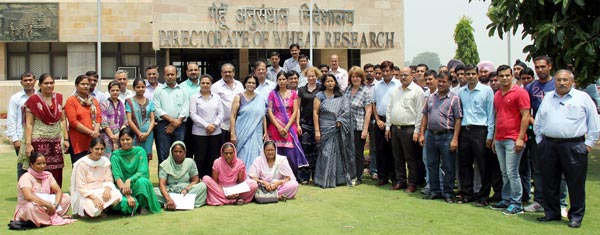 .
.
 The Nutrient Expert™ decision support tools for maize and wheat in India were officially launched for public use on 20 June 2013 at the National Agricultural Science Centre Complex in New Delhi during a meeting jointly organized by the International Plant Nutrition Institute (
The Nutrient Expert™ decision support tools for maize and wheat in India were officially launched for public use on 20 June 2013 at the National Agricultural Science Centre Complex in New Delhi during a meeting jointly organized by the International Plant Nutrition Institute (
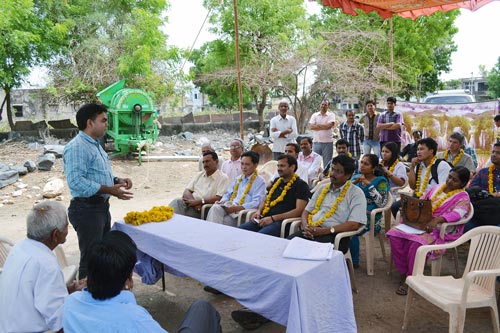 Rajasthan is one of the most stress-prone dry states of India, where farmers grow maize as major crop for food and domestic consumption. As such, it provided a perfect setting for the 2nd Annual Progress Review and Planning Meeting for the Abiotic Stress Tolerant Maize for Asia (ATMA) project. The meeting, jointly organized by the Maharana Pratap University of Agriculture and Technology (
Rajasthan is one of the most stress-prone dry states of India, where farmers grow maize as major crop for food and domestic consumption. As such, it provided a perfect setting for the 2nd Annual Progress Review and Planning Meeting for the Abiotic Stress Tolerant Maize for Asia (ATMA) project. The meeting, jointly organized by the Maharana Pratap University of Agriculture and Technology (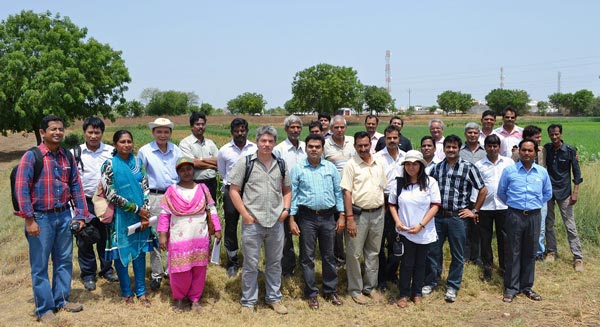 The session’s chairman added: “Our maize farmers have many choices regarding high-yielding varieties and technologies for optimal conditions, and they are experts in achieving high yields under such conditions. But when it comes to stress conditions they have very few choices, and that is where they need our intervention.”
The session’s chairman added: “Our maize farmers have many choices regarding high-yielding varieties and technologies for optimal conditions, and they are experts in achieving high yields under such conditions. But when it comes to stress conditions they have very few choices, and that is where they need our intervention.”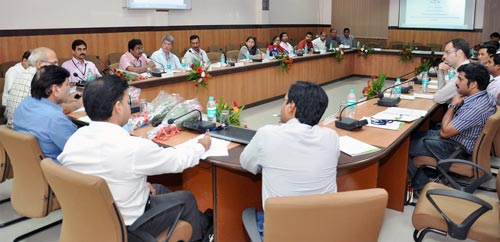 The farmer-scientist interaction produced very useful insights into the issues faced by maize farmers in the region and reiterated the importance of stress tolerant maize varieties for their livelihood. To conclude the day, farmers prepared and shared various maize dishes with the delegation.
The farmer-scientist interaction produced very useful insights into the issues faced by maize farmers in the region and reiterated the importance of stress tolerant maize varieties for their livelihood. To conclude the day, farmers prepared and shared various maize dishes with the delegation.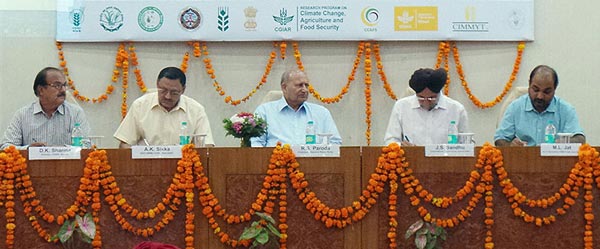
 Spot blotch is one of the major diseases in the wheat growing regions of Nepal and the knowledge allowing researchers to identify and understand the disease is thus crucial. A group of 12 wheat technical research staff from Nepal visited Banaras Hindu University (
Spot blotch is one of the major diseases in the wheat growing regions of Nepal and the knowledge allowing researchers to identify and understand the disease is thus crucial. A group of 12 wheat technical research staff from Nepal visited Banaras Hindu University (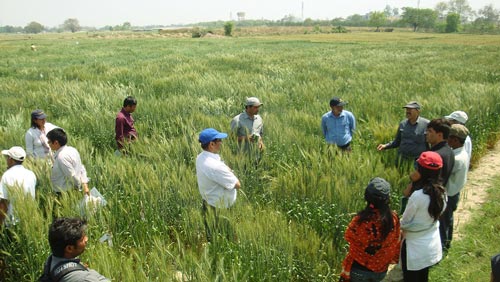 On the second day, participants visited the polyhouse and research station to learn about screening wheat genotypes
On the second day, participants visited the polyhouse and research station to learn about screening wheat genotypes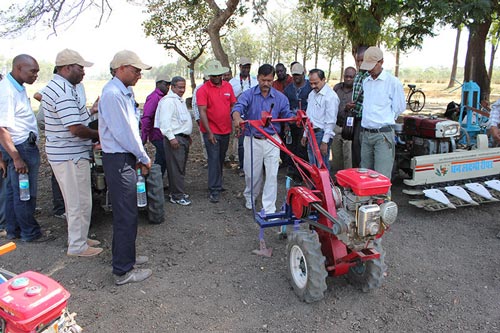 From 29 April to 10 May, 16 agricultural engineers, agronomists, machinery importers, and machinery manufacturers from Ethiopia, Kenya, Tanzania, and Zimbabwe took part in a study tour in India organized by CIMMYT, the Indian Council of Agricultural Research (
From 29 April to 10 May, 16 agricultural engineers, agronomists, machinery importers, and machinery manufacturers from Ethiopia, Kenya, Tanzania, and Zimbabwe took part in a study tour in India organized by CIMMYT, the Indian Council of Agricultural Research (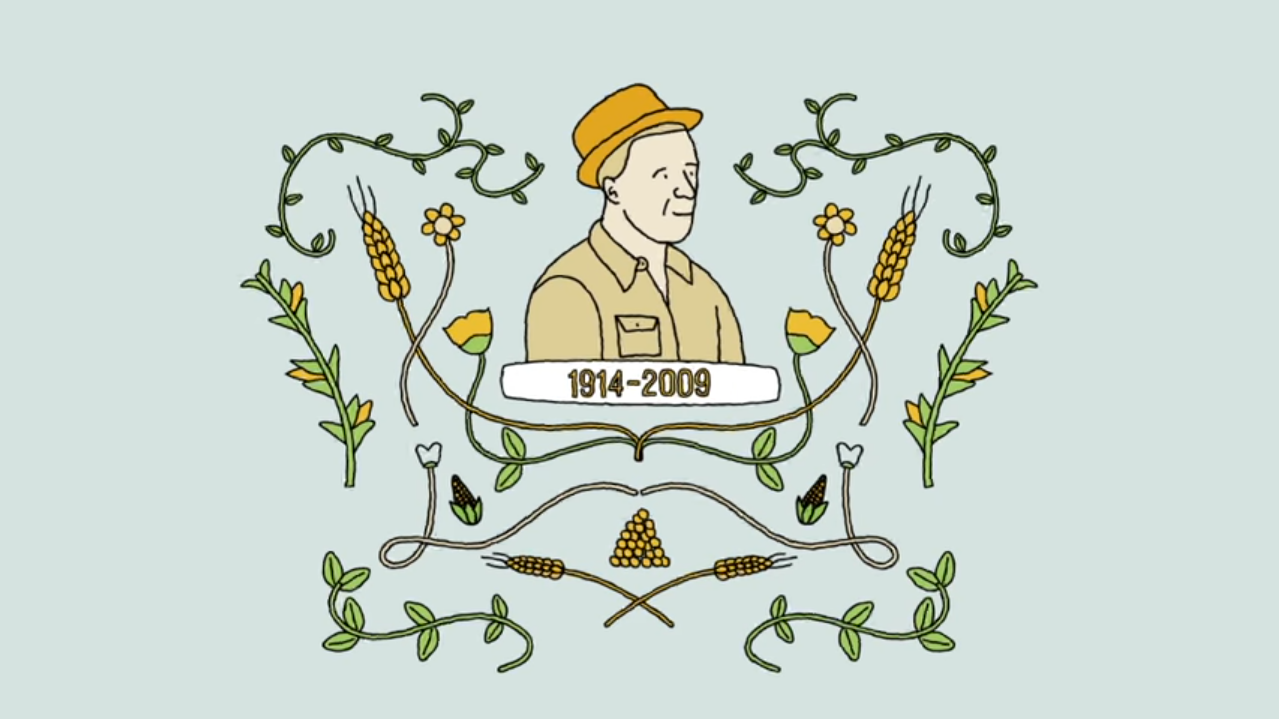
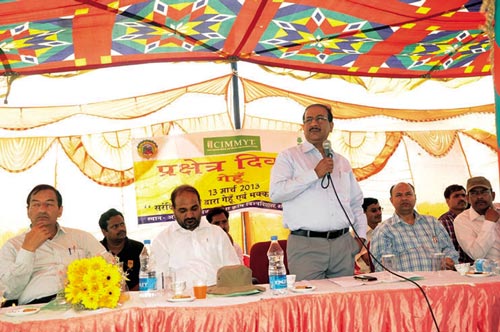 On 13 March 2013, a social learning exercise was organized jointly by Birsa Agricultural University (
On 13 March 2013, a social learning exercise was organized jointly by Birsa Agricultural University (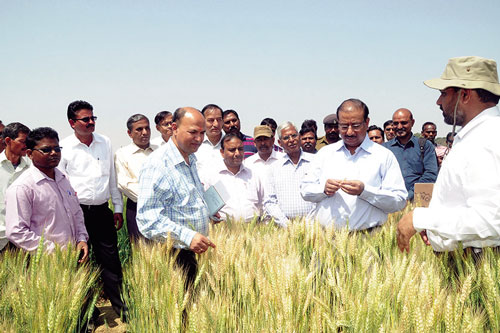 The project aims to conduct farmer participatory trials to eventually achieve mass adoption in the villages of Jharkhand. As the awareness of the project’s successes increases, so does the demand for CA technology. “Local machine manufacturers are encouraged to come forward to assemble and fabricate CA machines adapted to local farmers’ needs,” AK Singh reassured the participants. Further assurance on efficient dissemination of the knowledge and technology among farmers was provided by Chaudhary: “SAMETI utilizes a strong grassroots network of ATMA at district and block levels.” Recognizing the potential of CIMMYT and its dedication to the case, Chaudhary expressed his wish to work more closely with CIMMYT: “With your expertise, we could more efficiently train district and block levels agricultural official s and extension agents, and thus contribute towards state level extension mechanism enrichment.”
The project aims to conduct farmer participatory trials to eventually achieve mass adoption in the villages of Jharkhand. As the awareness of the project’s successes increases, so does the demand for CA technology. “Local machine manufacturers are encouraged to come forward to assemble and fabricate CA machines adapted to local farmers’ needs,” AK Singh reassured the participants. Further assurance on efficient dissemination of the knowledge and technology among farmers was provided by Chaudhary: “SAMETI utilizes a strong grassroots network of ATMA at district and block levels.” Recognizing the potential of CIMMYT and its dedication to the case, Chaudhary expressed his wish to work more closely with CIMMYT: “With your expertise, we could more efficiently train district and block levels agricultural official s and extension agents, and thus contribute towards state level extension mechanism enrichment.”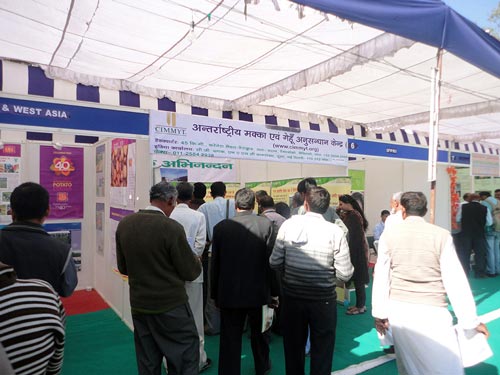 Pusa Krishi Vigyan Mela, a farmers’ fair organized by the Indian Agricultural Research Institute (
Pusa Krishi Vigyan Mela, a farmers’ fair organized by the Indian Agricultural Research Institute (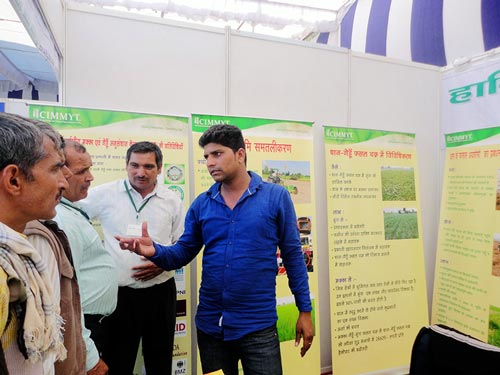 The socioeconomics team of CIMMYT India (Mamta Mehar and Subash Ghimire) also joined the fair to interact with farmers and learn about their perspectives on new technologies and farming-related constraints. Although the farmers came from different states, they mentioned having several common problems: the unavailability of quality seeds and other input on time, weather uncertainty, unpredictability of rainfall, and temperature variability. Farmers from Haryana and Rajasthan also talked about increasing pollution, degrading soil quality, and emergence of new type of insects and pests for which they would like to seek solutions. They were concerned about limited access to knowledge and low awareness on new technologies, especially those that help to manage climate change related risks. The socioeconomics team also learned that farmers are aware that using more than the advised amount of fertilizers and pesticides may harm the soil, but they do so anyways because they are afraid of the appearance of insects, pests, etc. as a result of unforeseen weather changes.
The socioeconomics team of CIMMYT India (Mamta Mehar and Subash Ghimire) also joined the fair to interact with farmers and learn about their perspectives on new technologies and farming-related constraints. Although the farmers came from different states, they mentioned having several common problems: the unavailability of quality seeds and other input on time, weather uncertainty, unpredictability of rainfall, and temperature variability. Farmers from Haryana and Rajasthan also talked about increasing pollution, degrading soil quality, and emergence of new type of insects and pests for which they would like to seek solutions. They were concerned about limited access to knowledge and low awareness on new technologies, especially those that help to manage climate change related risks. The socioeconomics team also learned that farmers are aware that using more than the advised amount of fertilizers and pesticides may harm the soil, but they do so anyways because they are afraid of the appearance of insects, pests, etc. as a result of unforeseen weather changes.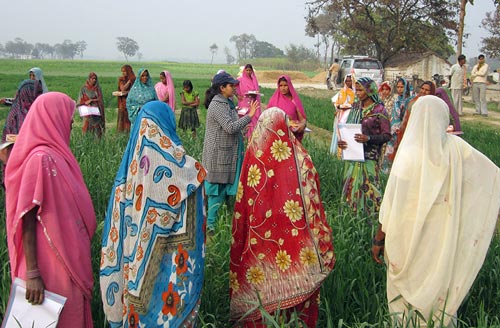 In the continuous effort to increase awareness of wheat biofortification and its use to improve health and quality of life in eastern India, Banaras Hindu University (
In the continuous effort to increase awareness of wheat biofortification and its use to improve health and quality of life in eastern India, Banaras Hindu University (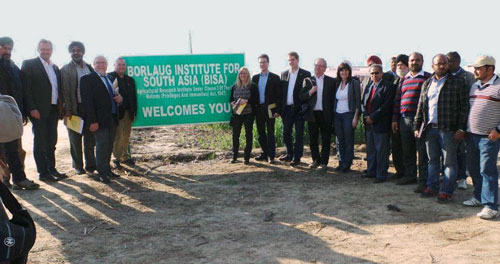 On 6 February 2013, the Borlaug Institute for South Asia (
On 6 February 2013, the Borlaug Institute for South Asia (
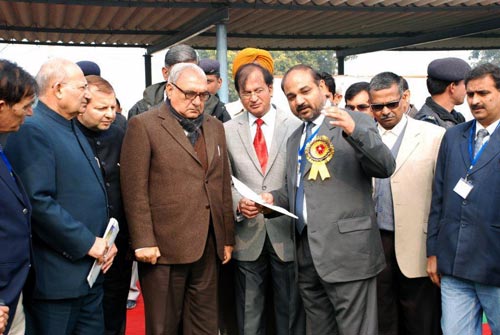 Thanks to high-yielding cultivars of wheat and rice, development of irrigation infrastructure, the work of innovative farmers, and the state’s support for improved technologies, the Indian state of Haryana has been a major contributor to the national food basket. However, the unsustainable monotonous rice-wheat cropping system increasingly threatens food security in the country. On 22 December 2012, a seminar on “Prosperity through diversification in agriculture” was jointly organized by the Haryana Farmers Commission, Indian Council of Agricultural Research (
Thanks to high-yielding cultivars of wheat and rice, development of irrigation infrastructure, the work of innovative farmers, and the state’s support for improved technologies, the Indian state of Haryana has been a major contributor to the national food basket. However, the unsustainable monotonous rice-wheat cropping system increasingly threatens food security in the country. On 22 December 2012, a seminar on “Prosperity through diversification in agriculture” was jointly organized by the Haryana Farmers Commission, Indian Council of Agricultural Research (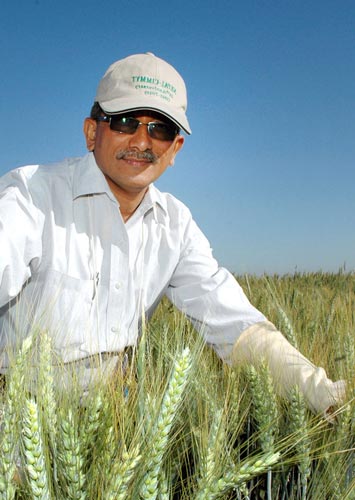 Arun Joshi, CIMMYT senior wheat breeder for South Asia, has been named Fellow of the prestigious Indian National Science Academy (
Arun Joshi, CIMMYT senior wheat breeder for South Asia, has been named Fellow of the prestigious Indian National Science Academy (